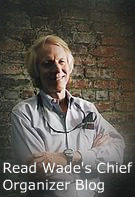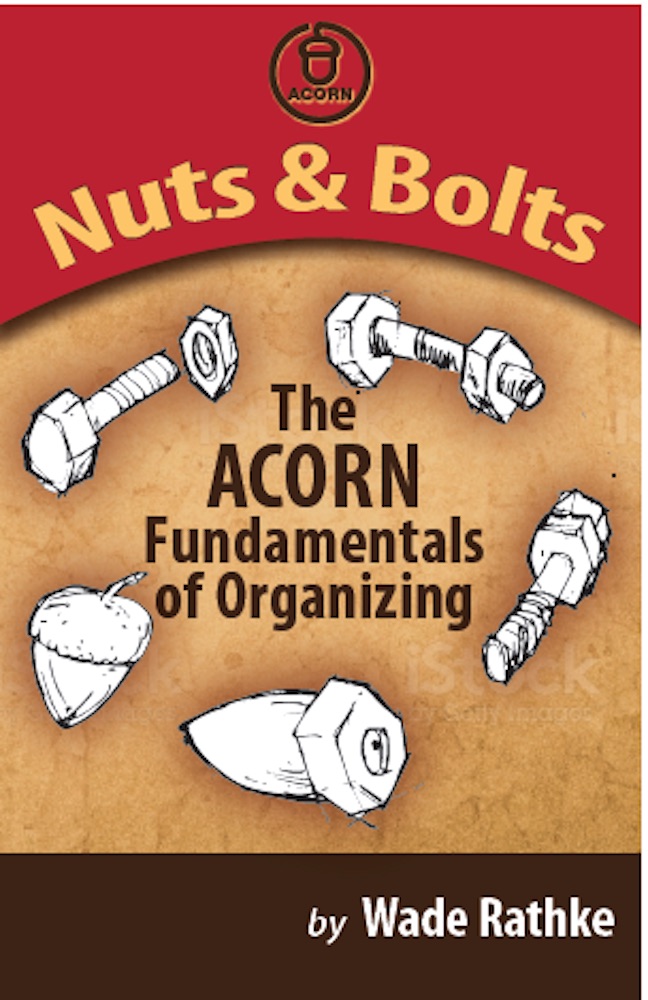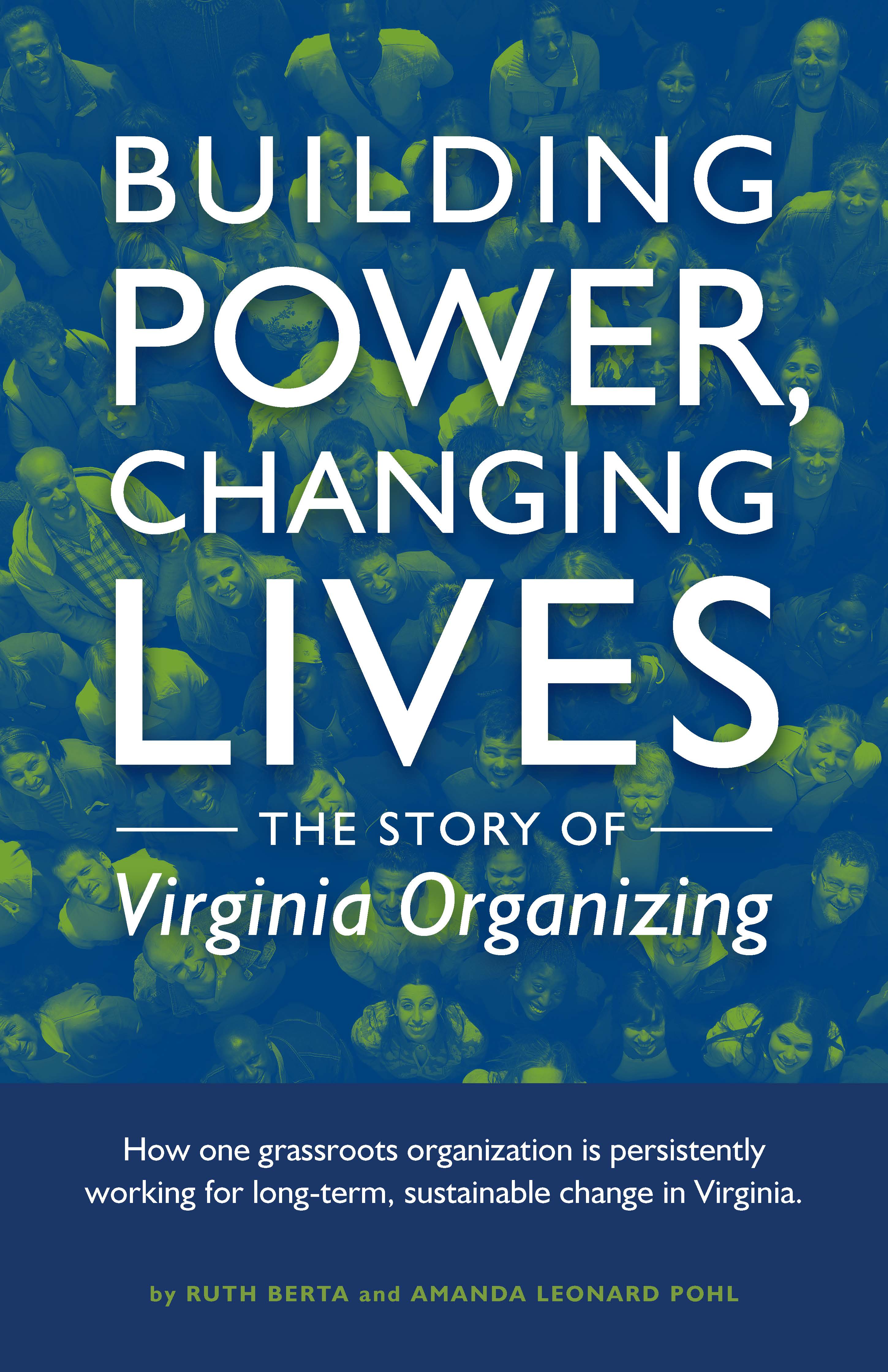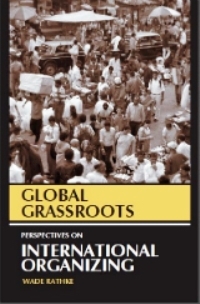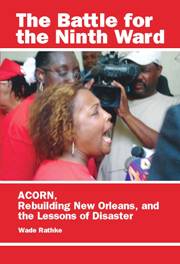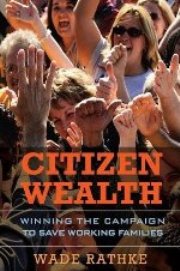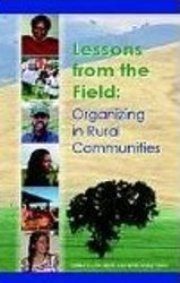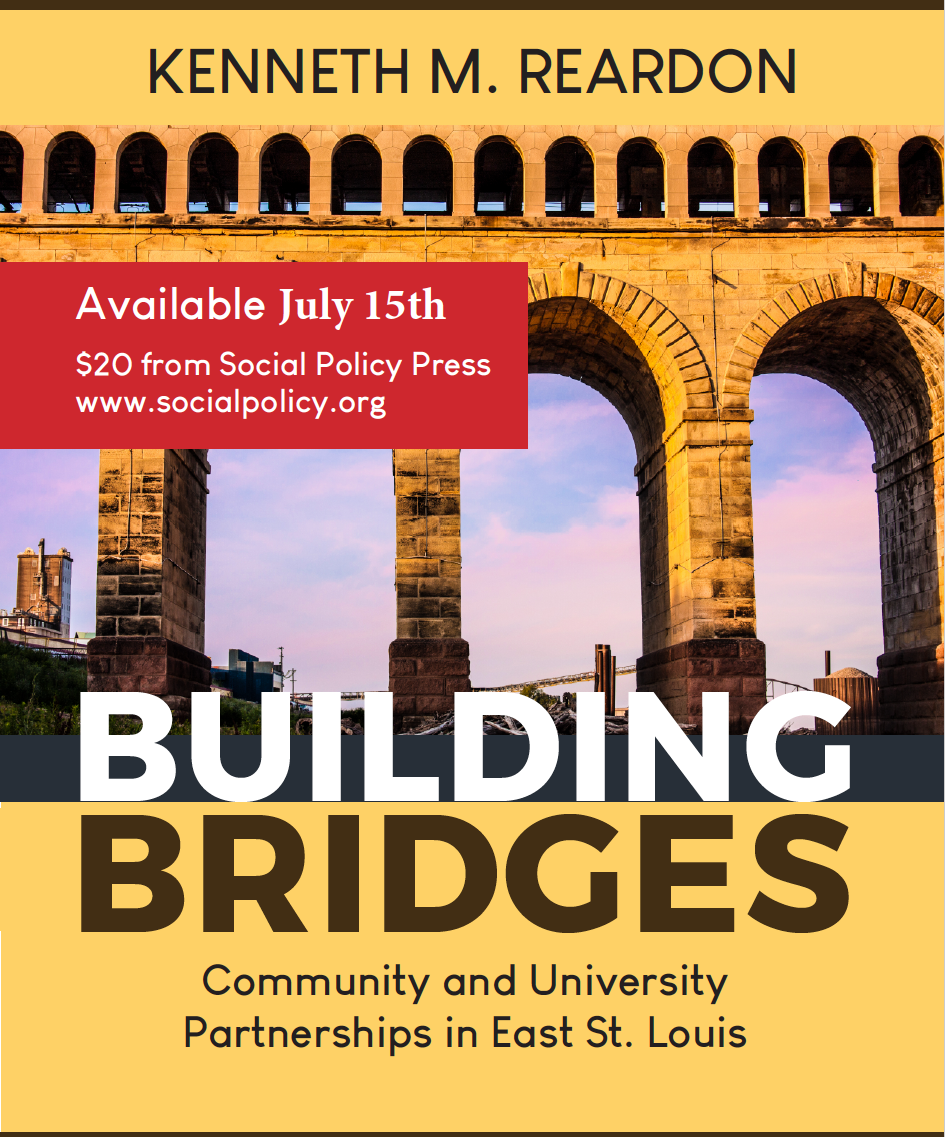EXCERPT - Insurgent Labor: The Vermont AFL-CIO 2017–2023
Written by David Van Deusen
Black Lives Matter. The Police and the Politics of Reality
Black Power is giving power to people who have not had power to determine their destiny. -- Huey P. Newton
Black Uprisings in the Wake of George Floyd’s Murder
The murder of George Floyd on May 25, 2020, at the hands of the Minneapolis police force sent shock waves of unrest across the United States. The racist killing sickened me, but in the days immediately following I did not anticipate that its impact would be felt across the continent. It was not until some days after his death that the political magnitude of what was about to unfold started to hit me.
On May 28, I was talking by phone with AFSCME Local 1343 president Damion Gilbert. We were discussing some grievances in the City of Burlington, as we do on most days. Toward the end of the call, he asked if I was going to the demonstration in Burlington. I asked him what the demonstration was about, and he explained it was a response to the Floyd murder and that he and some other 1343 members were intending to go and would be meeting up with the local’s Burlington Schools chapter chair Dwight Brown (who himself is a Black man and who was also a Vermont AFL-CIO district vice president from United!).[1] I told Damion I could not make it but was glad he would be there.
In the end, on May 30, over 1,200 Vermonters took part in this demonstration. Further, in communities all across Vermont rallies and vigils were being organized against the Floyd murder and in support of racial justice. Even in my small town of Cabot, population 1,434, a few dozen residents, including myself and my children, gathered in the town common for 8 minutes and 46 seconds (the time that a cop placed his knee on Floyd’s neck) of silence. Nationwide protests were taking form daily. In many cities, such as Chicago and Washington, DC, the protests took on militant and violent tones against a racist status quo. It has been reported that protests occurred in over two thousand US cities and towns, with an estimated twenty-six million Americans taking part in one form or another. Looking at the actions as a single though dispersed event over some weeks, this marked the largest demonstration in the history of the United States. A rebellion against centuries of racism and discrimination seemed to be taking form.
In the nation’s capital, as in many urban centers, demonstrations turned violent. Tellingly, one institutional target of attack, on the night of May 31, was Richard Trumka’s national AFL-CIO headquarters (located close to the White House). The union HQ suffered smashed windows, fire damage, and graffiti.
National AFL-CIO president Richard Trumka’s public statements after Floyd’s murder did not help. While paying lip service to antiracism and condemning the killing, Trumka refused to commit to any form of meaningful debate within the AFL-CIO concerning the role of police within the labor movement. Even while he engaged in a type of hollow virtue signaling, he also repudiated any and all protesters who engaged in violent or militant actions in this moment of national outrage.
In doing so, Trumka again made labor, on a national scale, irrelevant to the five-hundred-year struggle of Black people against systemic oppression. In short, he missed the mark, willfully misread the historic moment, and failed yet again in linking the struggle of the labor movement to the struggle and oppression suffered by tens of millions of Black Americans (millions of whom are union members).
Labor at a Crossroads on Black Liberation and Police Reform
With this unfolding political reality becoming clear to see, it was self-evident that the Vermont AFL-CIO could not be silent on the unfolding rebellions occurring in urban centers, nor could we ignore the intersection of labor politics and racial politics. Further, on June 8, the Writers Guild of America East (CWA) publicly called on the national AFL-CIO to expel the International Union of Police Associations (IUPA) from its ranks, asserting that the existence of a police union within the labor federation was antithetical to its goal of liberating workers. Further, on June 17, the seventy-five-thousand-plus-member MLK Labor Council (Seattle) voted to expel the Seattle Police Officers Guild for similar reasons.
The argument that advocates of these methods of racial redress made boiled down to this: Police too often kill working-class people, disproportionately Black men, and historically have acted as the armed wing of the bosses when it comes to strike-breaking. Conversely, police unions have defended their members from public outcry against such abuse of power and have not acted as a force willing to work with communities in order to provide meaningful accountability and public oversight. Concerning politics, police unions have opposed progressive change benefiting working-class and low-income people and often back far-right electoral candidates. Thus, the entry of police into the labor movement has retarded progressive change, not expedited it.
The truth is that tens of thousands of law enforcement personnel are actually represented by amalgamated unions, be they AFSCME, AFGE, AFT, or IBEW. At a time when union internationals are struggling to maintain their membership numbers, let alone grow, and in a post-Janus world where antilabor forces have sought to entice members to forgo voluntary union dues, any talk of further diminishing the membership lists in favor of more ideological purity should be expected to meet fierce resistance from powerful players. And philosophical objections aside, less dues coming into a union means less resources for new organizing, and thus the struggle to grow becomes again impaired. This is the rock and the hard place the AFL-CIO finds itself in when considering the question of police within our unions.
That said, the situation in Vermont was different in summer 2020. By and large, Vermont cops were represented by the independent Vermont Troopers Association, the VSEA (which also represented prison guards and parole officers), and the right-wing New England Police Benevolent Association (NEPBA). None of these unions were part of the AFL-CIO.
All told, of the hundreds of unionized shops in our labor council, only five were police departments.[2] AFSCME represented three small-town PDs, and IBEW represented another. The Brattleboro PD was represented by IUPA. Only four police departments, representing perhaps forty total cops, were the extent of our law enforcement membership (with none of them serving in any statewide union office).
Between Principle and Implosion: Vermont AFL-CIO Walks a Razor’s Edge
Being right is often a different thing than being smart and effective. Our United! coalition, while having unity around a progressive program, was not and is not monolithic. The fact is the Building Trades, a key component of our ruling coalition, was much more conservative than our more liberal college professors (UA/AFT). Many blue-collar AFSCME members were not ready to make radical breaks with mainstream American culture, including a generalized support for unionized police.
It was in this context that I called for an executive board meeting largely to discuss the rise of Black Lives Matter–organized protests and the role, if any, the Vermont AFL-CIO should take in this movement.
At our meeting, out of the gate, a number of the leadership were aggressively pushing for us to immediately expel all police from the state labor council. Chief among these was Sarah Alexander. Alexander, a professor at the University of Vermont, member of United Academics/ AFT, and a white woman, came to the issue with the passion and energy of a person who, perhaps for the first time, realized that racism exists in the world or at least the extent to which it is pervasive. Her zealous advocacy for radical and immediate action, consequences be damned, had a Paul-falling-off-his-horse-on-the-road-to-Damascus feel to it.
Also taking a hard line was Dwight Brown. Brown, one of two Black men in our leadership, was an AFSCME member and was an IT specialist in the Burlington Schools. His brother, years before, had been killed by a cop. He, along with 1343 president Damion Gilbert and others, had attended the recent protest in Burlington with his family. But Dwight, unlike Sarah, did not come across as a new zealot. Dwight, by virtue of his race, had dealt with and struggled against bigotry his whole life. However, even while demanding a comprehensive and principled response to the police killing of Black men and requiring that the labor movement be proactive in the fight against racism, Brown understood that major decisions should take into account potential fallout weighed against potential gain, or even justice.
On the flip side, some leaders, like Tim LaBombard, an IBEW member and president of the Vermont Building Trades Council, were firmly disinclined to take any action that would universally condemn unionized police, believing that kind of action would be alienating to a significant portion of our membership.
This first executive board meeting on issues relating to Black Lives Matter, the fight against racism, and police within the labor movement was contentious. Various and conflicting policy approaches were put forth on both sides of the issue. As debate continued, Alexander began to assert that any board or committee member not agreeing with her on the need to immediately expel all police from the state labor council were in fact white supremacists.
Executive Vice President Tristin Adie (AFGE) suggested that big issues like this should be debated and decided on by the rank and file directly, and not just by the elected executive board or presidential advisory committee. Thus, she proposed that an antiracist study and education committee be formed to look more at how racism is embedded within society and how it can be more effectively combated. She further asserted that action on racism and policing be tackled at our 2020 convention, by the members themselves, which was still some months off. However, these ideas were rejected, with Brown leading the argument that we don’t need more education on racism, we need action, and that that action needs to happen now. Alexander again aggressively pushed that any decision or action that did not immediately result in every cop being kicked out of the state labor council was damningly racist at its core and that every executive board member or Vermont AFL-CIO leader responsible for this failure must be understood as racists.
After two hours, the meeting concluded with tempers hot and no consensus emerging. The only agreement was that there would need to be a second meeting to discuss the matter and to see if a unified position could be reached. But reading the room, it was clear to me that if push came to shove, a majority would vote to expel the police, but we faced a danger here that if this matter were handled poorly or without thought beyond pure principles, what we did next could spell our rapid downfall.
In the aftermath, Alexander provided me her resignation, stating that the executive board and presidential advisory committee’s failure to agree with her showed that we valued white supremacy over antiracism. Brown also offered his resignation, out of frustration with the leadership’s inability to agree on a principled position on police reform at a time when the nation was erupting in protest. As president, I accepted Alexander’s resignation but not that of Brown.
Dwight Brown was a different story in every way. Brown, a leader in his AFSCME local, had already proven himself effective in both leading his members in a more progressive direction and in finding common ground with a diverse rank and file on issues ranging from economic to social to political. So I rejected Dwight’s resignation and instead asked him to give me a few days to try to work out a compromise whereby we would take a strong position in support of Black Lives Matter and against police abuse of power, but one that would minimize our exposure to factional implosion.
To those who supported the expelling of police, I recognized that they could likely force through a vote on their preference, but if they did, we would face the end of the United! coalition, we would fail to retain power at the next election, and a number of internationals would likely pull their dues (thus crippling us). But if they agreed to my compromise, they could hold their heads up high insofar as we would still be the first state labor council in the country with a police organizing moratorium in place, and we would be the only major labor body in the US, ever, to outright support Black self-determination. As such private one-on-one conversations continued, I worked up a draft resolution.
I worked closely with Dwight Brown on the elements of the draft resolution. I very clearly recognized that the hardliners within leadership would follow Dwight’s lead. If Dwight opposed it, so would they, and we would end up with the dangerous expulsion route being the likely outcome. But if Dwight felt good about the compromise, so would they.
All told, I knew that for the compromise to work, it would need to push the boundaries as far as possible and would need to expose us to the potential of some factional danger, but only to a degree that I calculated to be manageable (if even just barely). This was not an easy balance to strike. And frankly, understanding that the nine AFSCME locals in Vermont were parented to New England Council 93 (which in New Hampshire, Maine, and Massachusetts includes cops and corrections officers in its ranks), I anticipated major pushback on even this compromised stance. So to mitigate this threat, I called Council 93’s executive director, Mark Bernard, the day before the meeting in which the resolution would be voted on.
This was an inoculation call. I point-blank told him that the votes were there to expel the cops and that I knew that if we did this AFSCME would flip out. I further explained that I recognized the divisiveness that such an action would carry and recognized that the third-biggest union in the Vermont AFL-CIO, IBEW, would likely be on the same page as AFSCME if this were to occur. So I was therefore working on a compromise that would fall just short of an expulsion but which would also be well beyond anything normally agreeable to AFSCME. We talked at some length. In the end, he seemed to understand my situation (although I was not under the illusion that he would agree with my course of action). We ended the phone call amicably.
Running concurrently with all these discussions within Vermont and the region, national AFL-CIO representative Dan Justice, who had been at our previous executive board meeting as the eyes and ears of President Richard Trumka, reported back to the national organization that we were poised to take controversial action concerning antiracism and police in the labor movement that was not in step with the marching orders coming from DC.
As a result, President Trumka had his lieutenant for the Northeast, David Driscoll-Knight, call me. Driscoll-Knight implored me, as state labor council president, to shut down any and all debate or action that would challenge, in any way, existing AFL-CIO policy concerning police, police reform, or the relationship between police and the labor movement. After feeling pressure from the Writers Guild of America East (CWA) and from the MLK Labor Council (Seattle), Trumka and his establishment cronies did not want a new front to be opened against his leadership (or lack thereof). In Trumka’s mind, he ruled the AFL-CIO and he saw us as vassals, no more no less. And the role of a vassal is to publicly parrot the party line handed down by the ruler.
Driscoll-Knight implored me to shut everything down at all costs. Being transparent (something I would learn is not always advisable in dealings with national AFL-CIO union bosses), I explained to him that I was looking to navigate our labor council toward a moratorium against new police organizing and that this would be an alternative to expelling law enforcement. He was not excited about either of these probabilities. Driscoll-Knight even went so far as to make the absurd and reactionary argument that “leadership is difficult, and sometimes a leader needs to make the hard decision,” and as their Vermont leader I had to make the difficult decision to shut down all democratic debate on the police issue. The funny thing about that argument is, as he was saying the first part, in my mind I was agreeing. Leadership is hard, and leaders do, at times, need to make the hard decision. And thus I had to invite the state labor council to make this hard decision, to risk our relationship with the national AFL-CIO, and to take a meaningful stance on the very real problem of police repeatedly murdering Black workers.
Supporting Black Self-Determination and Police Reform
Something more than a week later, on June 28, 2020, with all this back work complete, we held a second executive board meeting. After lengthy discussion, the following was adopted overwhelmingly:
Vermont AFL-CIO Stands with Black Communities in Resistance
-
Self Determination for Black People in the US!
-
Free All Black Political Prisoners!
-
The Murders Must Be Stopped!
-
Black Lives Matter!
Vermont AFL-CIO Position Statement on the Fight against Racism:
Now Is the Time for Unity and Action!
June 28, 2020, Montpelier, VT—Black Lives Matter. The Vermont AFL-CIO understands and recognizes that the United States of America is a nation which has long been governed by a ruling class whose power (social and economic) is rooted in slavery, racism, inequity, and oppression. We further see with clear eyes that Black people, whose ancestors were brought to this country in chains, have suffered (and continue to suffer) oppression on a massive and inexcusable scale. Such facts are made plain by not only looking at history, but also by looking at contemporary unemployment figures, poverty rates, average household income, incarceration rates, and through policing data. People who are Black are also murdered by American police officers with sickening regularity. George Floyd was not an exception. He, like Breonna Taylor, Michael Brown, Terence Crutcher, Eric Garner, and Freddie Gray (to name but a few), was one of the latest in a long line of martyrs going back hundreds of years (and accounting for thousands of taken lives). We must not become numb to these murders. We cannot accept that Black families must educate their children on how to not become the target of unprovoked police violence. We cannot allow systematic racism and police violence against Black people to continue as the regularity that it has always been. Rather, we must resist.
Vermont is not immune to racism and police repression. In our largest city, Burlington, Blacks were the subject of police use of force in 20 percent of all cases over the last seven years, despite composing just 6 percent of the city’s population. And further, throughout Vermont Black people make up 8.5 percent of the prison population and account for 2.69 percent of all state trooper vehicle stops even though they make up only 1.4 percent of the total populace. These figures are deeply troubling.
The Vermont AFL-CIO, which of course includes members from all races and nationalities, seeks to be the united voice of Vermont’s multiracial working class. As such, we cannot be silent while the Black community continues to be the subject of oppression and brutality both here at home and across the nation generally. And for us, this means that we intend to stand with Black Lives Matter. Conversely we will not and cannot stand alongside police organizations when they seek to defend the indefensible, namely the murder and brutalization of Black citizens. Therefore, the Vermont AFL-CIO affirms the following positions and actions:
- We call on unions to stand with Black Lives Matter, to stand with the Black community, and to organize in these communities to widen and strengthen a united multiracial labor movement and to NOT organize any new police groups into the ranks of organized labor;
- We support Black self-determination in the United States, as the fate of the Black community must be defined by the Black community itself;
- We state our allegiance with those in the Black community who take action in their own self-defense;
- We state our allegiance with all those who have and continue to engage in uprisings throughout the United States in resistance to racism, police brutality, oppression, and economic exploitation;
- We ask our Vermont rank-and-file union membership to support Black Lives Matter and to take part in the demonstrations being organized across the Green Mountains against racism, against police brutality, and for adequate investment in the expansion of social programs as opposed to the funding of a system which criminalizes and brutalizes Black, Brown, Native American, and low-income people;
- We call for a union-led Green New Deal economic recovery that advances the needs of Black, Brown, Native American, low-income, and working-class people;
- We call on state and federal governments to release all Black and allied political prisoners incarcerated for actions alleged to have been taken while fighting against racism and for Black liberation while serving in, or allied to, the Black Panther Party, the Black Liberation Army, and Republic of New Afrika. We further commit the sum of $1,000 to the Jericho Movement, an organization that advocates for and seeks to defend political prisoners within the United States. And here we encourage the national AFL-CIO to contribute a sum of $100,000 to the Jericho Movement;
- We call for the State of Vermont to fundamentally rethink how we, as a society, approach public safety;
- We call on the Vermont General Assembly to immediately pass meaningful police reform that includes the outlawing of chokeholds (with no loopholes or exceptions), and the creation of the nation’s highest bar for any and all use of force (and we condemn any and all who oppose such immediate reforms as reactionaries on the wrong side of history);[3]
- We call on the Vermont General Assembly to pass legislation creating a statewide Citizens Police Oversight Commission vested with subpoena power;
- We further call on the Vermont General Assembly to reduce the state police budget in order to reallocate funds to social programs, especially programs that benefit Black, Brown, Abenaki, and low-income communities;
- We call on the City of Burlington to reduce their police budget by 30 percent in order to reallocate funds to social programs, especially programs that benefit Black, Brown, Abenaki, and low-income communities;
- We commit to supporting and advancing the creation of Black, Indigenous, and People of Color (BIPOC) caucuses within the Vermont AFL-CIO in order to better guarantee that the needs, desires, and concerns of Black and BIPOC union members are articulated and advanced by our state labor council;
- We assert that all efforts and programs aimed at transforming society according to the notions of equity and antiracism which are advocated for herein, be led by those communities most impacted by the wrongs we are seeking to overcome, and who stand to gain through such a transformative process;
- We commit an additional sum of $1,000 to Black Lives Matter of Greater Burlington in order to support their efforts to combat racism and to defend Black communities;
- And finally we call on non-AFL-CIO labor unions in Vermont to join us in supporting Black Lives Matter, in more than just name, and adopt the commitments listed herein;
The Vermont AFL-CIO, representing ten thousand working-class Vermonters, opposes all forms of racism and discrimination. We know what side we are on. We say without hesitation “Black Lives Matter.”
UNITED!
The Vermont AFL-CIO
David Van Deusen is the former president of the Vermont AFL-CIO. Emergent Labor is available form www.pmpress.org.
[1] Brown, in 2021, would become my United! running mate and would be elected to the position of executive vice president. He would retain that position and serve with honor until stepping back in late June 2022. In his place, after an indicative vote of the membership at our August 2022 convention, Katie Harris would be appointed to this position.
[2] As of 2024, Vermont AFL-CIO unions now represent only one small municipal police department (Morrisville, organized with IBEW Local 300). The only other sworn law enforcement represented by AFL-CIO unions is a tiny minority within the VSEA (state police lieutenants, DMV police, Liquor Control police, and deputy sheriffs), which brought them with them when they affiliated with the AFL-CIO in 2023. Previously, Brattleboro PD was represented by IUPA, but they chose to pay no dues to the Vermont State Labor Council and have since affiliated with the NEPBA (which is not part of the AFL-CIO). Since 2020, St. Johnsbury PD, Newport PD, and Manchester PD (all formerly with AFSCME) chose to leave to be represented by the right-wing pro-Trump NEPBA.
[3] This point was included as a direct response to the recent actions of VSEA execu- tive director Steve Howard (a Democrat). Days before our resolution was adopted, Howard arranged for a police academy trainer, on behalf of VSEA, to provide testimony to the Vermont House of Representatives in support of police use of chokeholds and against any change in the law that would prevent cops from choking citizens. Howard, in the shadow of the murder of George Floyd, was actively opposing meaningful changes to use-of-force regulations concerning law enforcement. I, like most of the Vermont left, found this decision by Howard to be sickening and a clear example of the moral and strategic failures he brought to the Vermont State Employees’ Association.

